Grass clippings, often viewed as mere waste after mowing, are a treasure trove of benefits for gardeners and homeowners alike. One of the most significant advantages of utilizing grass clippings is their ability to enrich the soil. When left on the lawn or added to garden beds, these clippings decompose rapidly, returning essential nutrients such as nitrogen, phosphorus, and potassium back into the earth.
This natural recycling process not only reduces the need for synthetic fertilizers but also promotes a healthier ecosystem within the soil. The organic matter in grass clippings improves soil structure, enhances moisture retention, and fosters beneficial microbial activity, creating a thriving environment for plants.
In many regions, yard waste constitutes a substantial portion of landfill material. By repurposing grass clippings, homeowners can contribute to environmental sustainability efforts. Instead of bagging and discarding clippings, which often leads to increased greenhouse gas emissions from landfills, recycling them on-site helps minimize waste and lowers the carbon footprint associated with lawn maintenance.
This practice aligns with broader ecological goals, promoting a more sustainable approach to gardening and landscaping.
Key Takeaways
- Grass clippings provide free nutrients and organic matter for your lawn and garden
- Collect and store grass clippings in a dry, well-ventilated area to prevent mold and odor
- Use grass clippings as mulch to retain moisture, suppress weeds, and regulate soil temperature
- Incorporate grass clippings into compost to add nitrogen and speed up the decomposition process
- Apply grass clippings as a natural fertilizer to provide essential nutrients for plant growth
How to Properly Collect and Store Grass Clippings
Collecting grass clippings effectively requires a few simple strategies to ensure they remain fresh and usable for various applications. First and foremost, it is essential to mow when the grass is dry. Wet clippings can clump together, making them difficult to collect and store.
Using a mulching mower can also be beneficial; these mowers finely chop the grass, allowing it to decompose more quickly if left on the lawn or making it easier to collect if bagged. If you prefer to collect clippings, consider using a mower with a bag attachment or a rake to gather them efficiently. Once collected, proper storage of grass clippings is crucial to prevent spoilage and odor issues.
Ideally, clippings should be stored in a cool, dry place with good air circulation. A compost bin or a designated area in the garden can serve as an excellent storage solution. If you plan to use the clippings for mulch or composting later, consider layering them with other organic materials like leaves or kitchen scraps to maintain airflow and prevent compacting.
It’s important to monitor the moisture level; if the clippings become too wet, they can start to decompose anaerobically, leading to unpleasant odors and attracting pests.
Using Grass Clippings as Mulch in the Garden
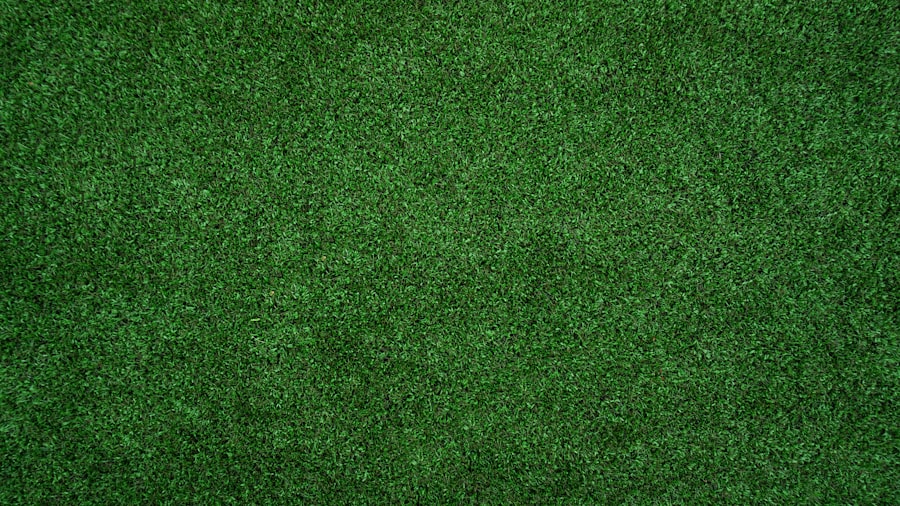
Grass clippings make an excellent mulch option for gardens due to their ability to suppress weeds and retain soil moisture. When applied in a layer of about two to four inches around plants, they create a barrier that blocks sunlight from reaching weed seeds, thereby inhibiting their growth. This natural weed control method reduces the need for chemical herbicides, promoting a healthier garden environment.
Additionally, as the grass clippings break down over time, they enrich the soil with nutrients, further benefiting plant growth. Another advantage of using grass clippings as mulch is their capacity to retain moisture in the soil. During hot summer months, this can be particularly beneficial for maintaining consistent soil moisture levels, reducing the frequency of watering required.
The organic matter in grass clippings helps create a microclimate around plants, protecting roots from extreme temperature fluctuations. Furthermore, as they decompose, they improve soil structure and aeration, allowing roots to penetrate more easily and access nutrients.
Incorporating Grass Clippings into Compost
| Metrics | Value |
|---|---|
| Grass Clippings Quantity | 10 pounds |
| Compost Turn Frequency | Every 3 days |
| Compost Temperature | 120°F |
| Compost Moisture Level | 50% |
Grass clippings are an invaluable addition to compost piles due to their high nitrogen content. They are considered “green” materials in composting terminology, which means they provide essential nutrients that help accelerate the decomposition process. When adding grass clippings to your compost pile, it’s important to balance them with “brown” materials such as dried leaves, straw, or cardboard.
This balance is crucial because too many green materials can lead to a soggy pile that smells unpleasant and decomposes slowly. To effectively incorporate grass clippings into compost, layer them with other organic materials rather than dumping large quantities at once. This layering technique promotes better aeration and helps maintain an optimal carbon-to-nitrogen ratio.
Turning the compost regularly will also enhance decomposition by introducing oxygen into the mix. Over time, the grass clippings will break down into rich compost that can be used to nourish garden beds or potted plants, providing a sustainable source of nutrients without relying on chemical fertilizers.
Using Grass Clippings as a Natural Fertilizer
The nutrient-rich composition of grass clippings makes them an excellent natural fertilizer for lawns and gardens. When applied directly to the soil or mixed into garden beds, they release nitrogen and other essential nutrients as they decompose. This slow-release fertilization method provides plants with a steady supply of nutrients over time, promoting healthy growth without the risk of nutrient burn that can occur with synthetic fertilizers.
To use grass clippings as fertilizer effectively, it’s best to apply them in thin layers rather than in thick mats that can smother plants or create anaerobic conditions. A layer of about half an inch is ideal for direct application on lawns or around garden plants. Additionally, mixing grass clippings into the top few inches of soil can enhance nutrient availability while improving soil texture and moisture retention.
This practice not only nourishes plants but also contributes to overall soil health by fostering beneficial microbial activity.
Preventing Weed Growth with Grass Clippings
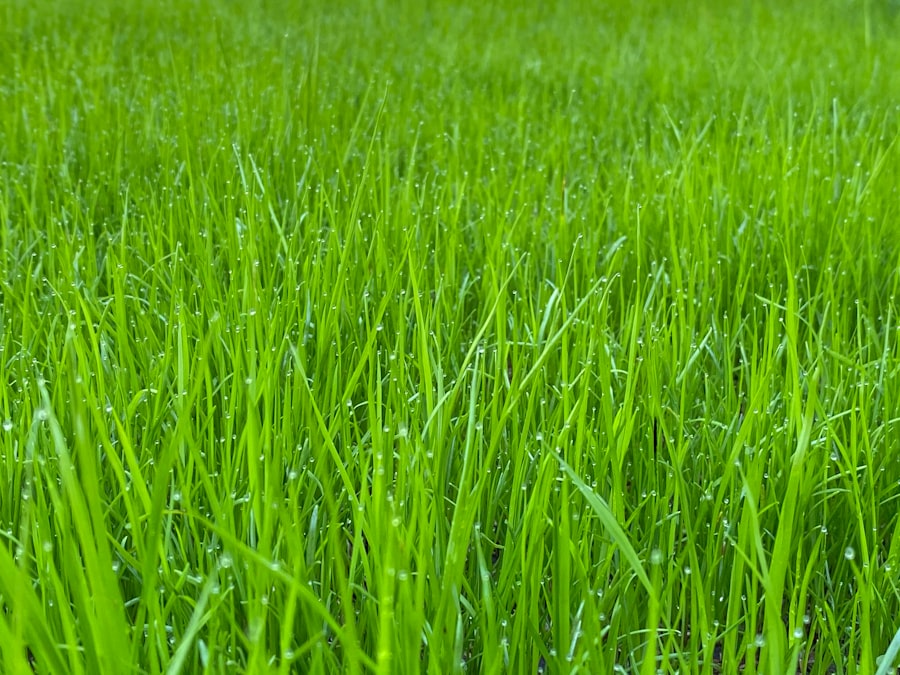
One of the most practical uses of grass clippings is their ability to prevent weed growth in gardens and landscaped areas. When applied as mulch around plants or over bare soil, grass clippings create a physical barrier that blocks sunlight from reaching weed seeds. This suppression method is particularly effective when applied in sufficient thickness—ideally two to four inches—allowing for adequate coverage while still permitting water and air to reach the soil.
In addition to blocking sunlight, grass clippings also help retain moisture in the soil, which can further inhibit weed germination. Weeds often thrive in dry conditions; by maintaining consistent moisture levels through mulching with grass clippings, you create an environment less conducive to weed growth. Furthermore, as the clippings decompose over time, they enrich the soil with nutrients that support healthy plant growth while simultaneously outcompeting weeds for resources.
Using Grass Clippings to Improve Soil Health
The incorporation of grass clippings into garden beds or compost piles significantly enhances soil health over time. As they break down, these clippings contribute organic matter that improves soil structure and aeration. Healthy soil is characterized by its ability to retain moisture while allowing excess water to drain away; this balance is crucial for preventing root rot and promoting robust plant growth.
Moreover, grass clippings foster beneficial microbial activity within the soil ecosystem. Microorganisms play a vital role in breaking down organic matter and making nutrients available to plants. By adding grass clippings to your garden or compost pile, you are essentially feeding these microorganisms, which in turn support plant health by enhancing nutrient cycling and improving overall soil fertility.
This symbiotic relationship between organic matter and microbial life is fundamental for sustainable gardening practices.
Tips for Safely Using Grass Clippings in the Yard
While grass clippings offer numerous benefits for gardening and landscaping, there are some important considerations for their safe use. First and foremost, it’s essential to avoid using clippings from lawns treated with herbicides or pesticides within a certain timeframe after application. Chemicals can persist in grass clippings and may harm beneficial insects or contaminate vegetable gardens if not allowed sufficient time for degradation.
Additionally, when applying grass clippings as mulch or fertilizer, it’s wise to monitor their moisture content. Clippings that are too wet can become compacted and lead to anaerobic conditions that produce foul odors and attract pests like flies or rodents. Conversely, overly dry clippings may blow away or fail to provide adequate coverage for weed suppression.
Striking a balance in moisture content ensures that grass clippings serve their intended purpose effectively while contributing positively to your garden’s health. In conclusion, utilizing grass clippings presents an array of benefits that extend beyond mere waste disposal. From enriching soil health and providing natural fertilizers to suppressing weeds and enhancing moisture retention, these simple byproducts of lawn care can transform gardening practices into more sustainable endeavors.
By understanding how to collect, store, and apply grass clippings effectively, homeowners can harness their full potential while contributing positively to environmental sustainability efforts.
If you are interested in learning more about the sources of knowledge, you may want to check out the article The Sources of Knowledge: Pramanas. This article delves into the various ways in which we acquire knowledge and how different sources can impact our understanding of the world. It’s a fascinating read that can provide valuable insights into the nature of knowledge acquisition.
FAQs
What are grass clippings?
Grass clippings are the small pieces of grass that are cut and removed from a lawn during mowing.
What can I do with grass clippings?
Grass clippings can be used as a natural mulch for gardens and flower beds, added to a compost pile to create nutrient-rich soil, or left on the lawn to decompose and return nutrients to the soil.
Are grass clippings good for the lawn?
Yes, leaving grass clippings on the lawn can help to return nutrients to the soil, improve moisture retention, and reduce the need for chemical fertilizers.
Can grass clippings be used as animal feed?
While grass clippings can be fed to some animals, it is important to ensure that the clippings are free from pesticides and other chemicals that could be harmful to the animals.
How should I store grass clippings for composting?
Grass clippings should be stored in a well-ventilated area and turned regularly to promote decomposition. It is important to avoid compacting the clippings to prevent them from becoming anaerobic.











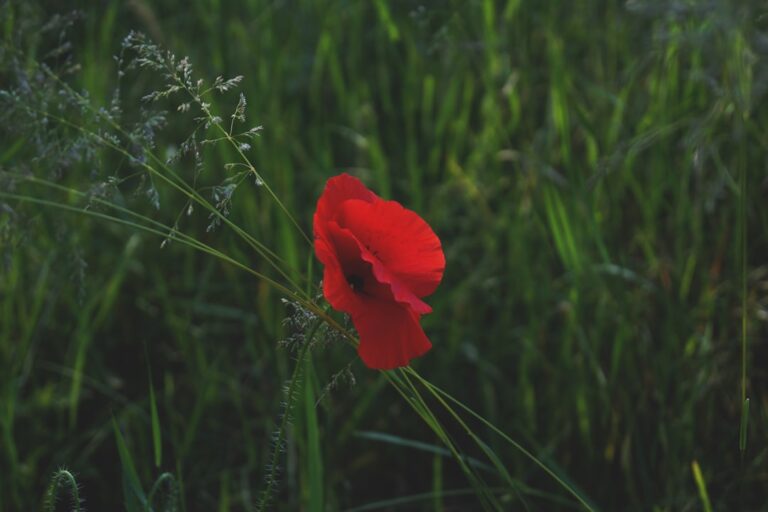

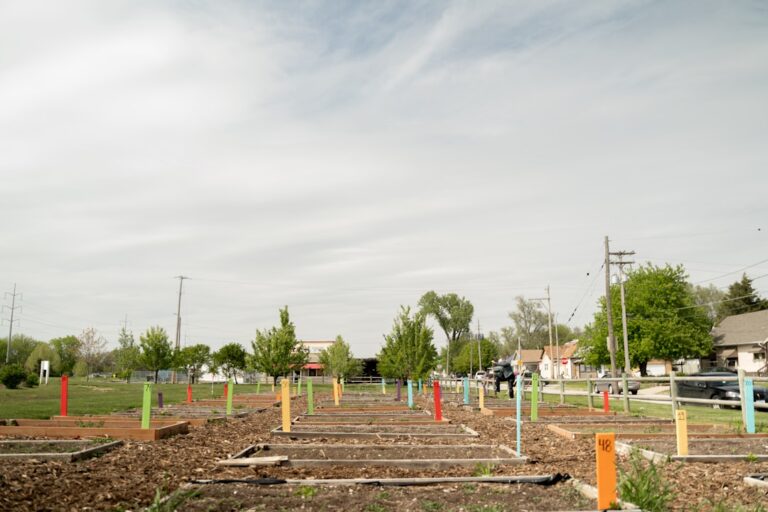



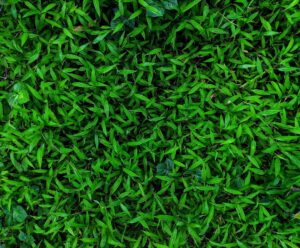






+ There are no comments
Add yours